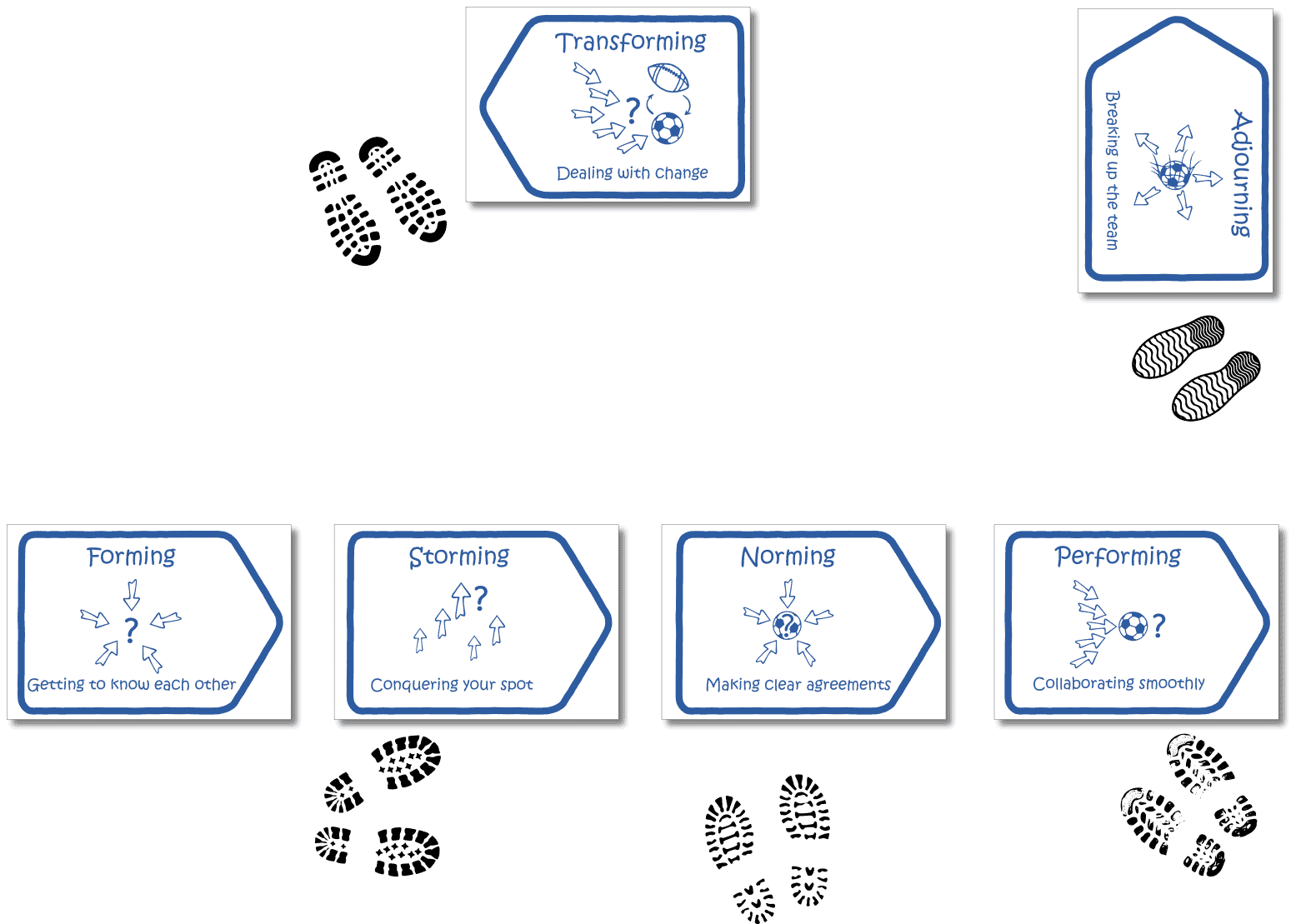Goal
Improved ability to deal with the challenges of team development in new teams and after a change in composition or assignment.
Do you recognize this: you come from a smoothly running assignment into a new team. Although the nature of the work has not changed, everything seems much more difficult. How is it that on one team you seem to have wings and on the other you just can’t get off the ground? Tuckman’s growth stages help a team to have an open discussion of where we stand as a team and understand the current and upcoming challenges, based on the current stage.
- Increased connectedness
- Better understanding of team development callenges
- Better collaboration
- Agreement on next steps
Videos
Tuckman's Stages Explained (4.5 minutes, EN)
Video on Team Building, Organizational Behavior, and Tuckman’s Five Stages of Team Development – Created using PowToon.
To Work

- Distribute the floor sheets for the Forming, Storming, Norming, and Performing stages on the floor. Also add Transforming and Adjourning if applicable.
- Provide a brief explanation of the model.
- Ask each team member to stand near the floor plate that they believe correspond to the team’s current stage of development. Then ask for current examples that demonstrate this. Concrete examples lead to more insight into the model and a share a picture of the current situation of the team.
- Ask the team members to stand where they feel most comfortable. Then ask the team members what they like about this stage. Is there a lot of variation between the team members or are all team members in the same place? Diversity is great, so they can complement each other. If a seat is completely empty, ask the team what they need to deal with this phase.
- Finally, ask the team members to stand at the stage in the model they experience as the most difficult for them. Then ask them what exactly they find difficult about this. Here you can ask what they need to feel comfortable at this stage.
- Then discuss with the team what insights they have gained from this method. Also ask what follow-up actions are needed now to act on these insights. “What small step can you take tomorrow?”
Source
The team development model is a psychological model about group dynamics developed by American social psychologist Bruce W. Tuckman.
You find a description of this model in section 2.4 Collaboratively Improve Collaboration in our book Connective Teamwork (EN, NL). The book helps you set your team in motion with a practical 5-step plan and 20 teamwork techniques. This exercise is described in more detail in section 7.2 Team Development.
You can learn more about and practice this technique in our Connective Team Coach Training Course.

Downloads
More resources
Contact me



